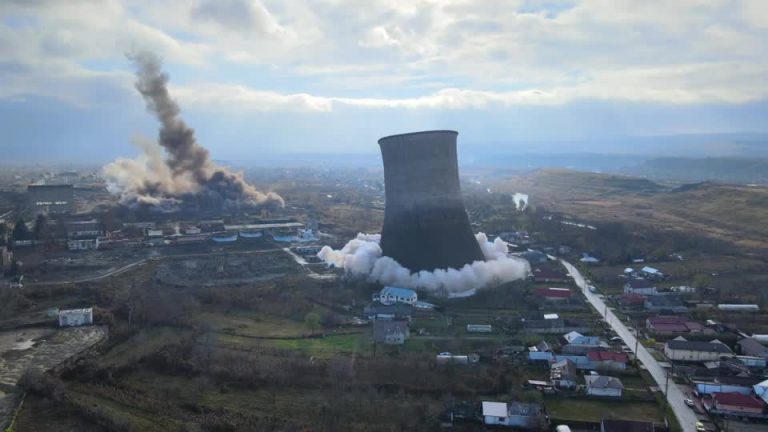Two towers of what was once a Romanian coal-fired power station were demolished on Thursday (November 17), making space for the construction of a controversial proposed nuclear plant.
Locals gathered to watch as a smoke stack and cooling tower in the town of Doicesti, about 90km (55 miles) northwest of Bucharest, collapsed after controlled explosions.
The town is a possible site for a proposed new nuclear plant developed in collaboration with the U.S. firm NuScale using Small Modular Reactor (SMR) technology.
The proposal has sparked concerns from locals as well as Greenpeace environmental activists who demonstrated in the town against the project on Nov. 3, saying locals have not been properly consulted and the technology the plant would use has not been proven to be safe.
On its website, NuScale claims high safety standards and a “Triple Crown” safety system which it says shuts down and self-cools a reactor indefinitely, even without operation or power supply.
Success
You are now signed up for our newsletter
Success
Check your email to complete sign up
NuScale and Romania’s nuclear power operator Nuclearelectrica say the project if it goes ahead, would help Romania reduce its reliance on fossil fuels and provide jobs to the local economy.
In September, Romanian Energy Minister Virgil Popescu said he also hoped the project would help Romania become a regional center for the production of SMR technology.
NuScale is hoping to build its first plant, the Carbon Free Power Project with multiple SMRs, at the Idaho National Laboratory. The first would come online in 2029, and the plant would be fully operational in 2030.
As well as Romania, NuScale also wants to build plants in Poland and Kazakhstan.
Feasibility studies and initial planning for the development of the plant in Doicesti have been backed with more than $15 million in grants from the U.S. government.
Production: Anca Cernat, Thomas Holdstock

















